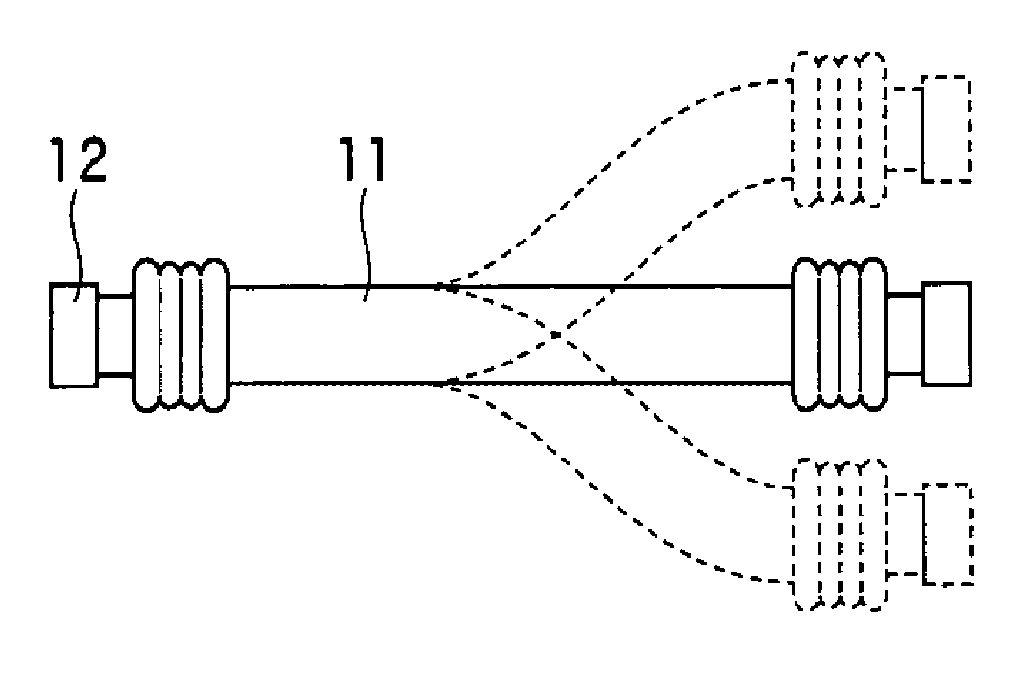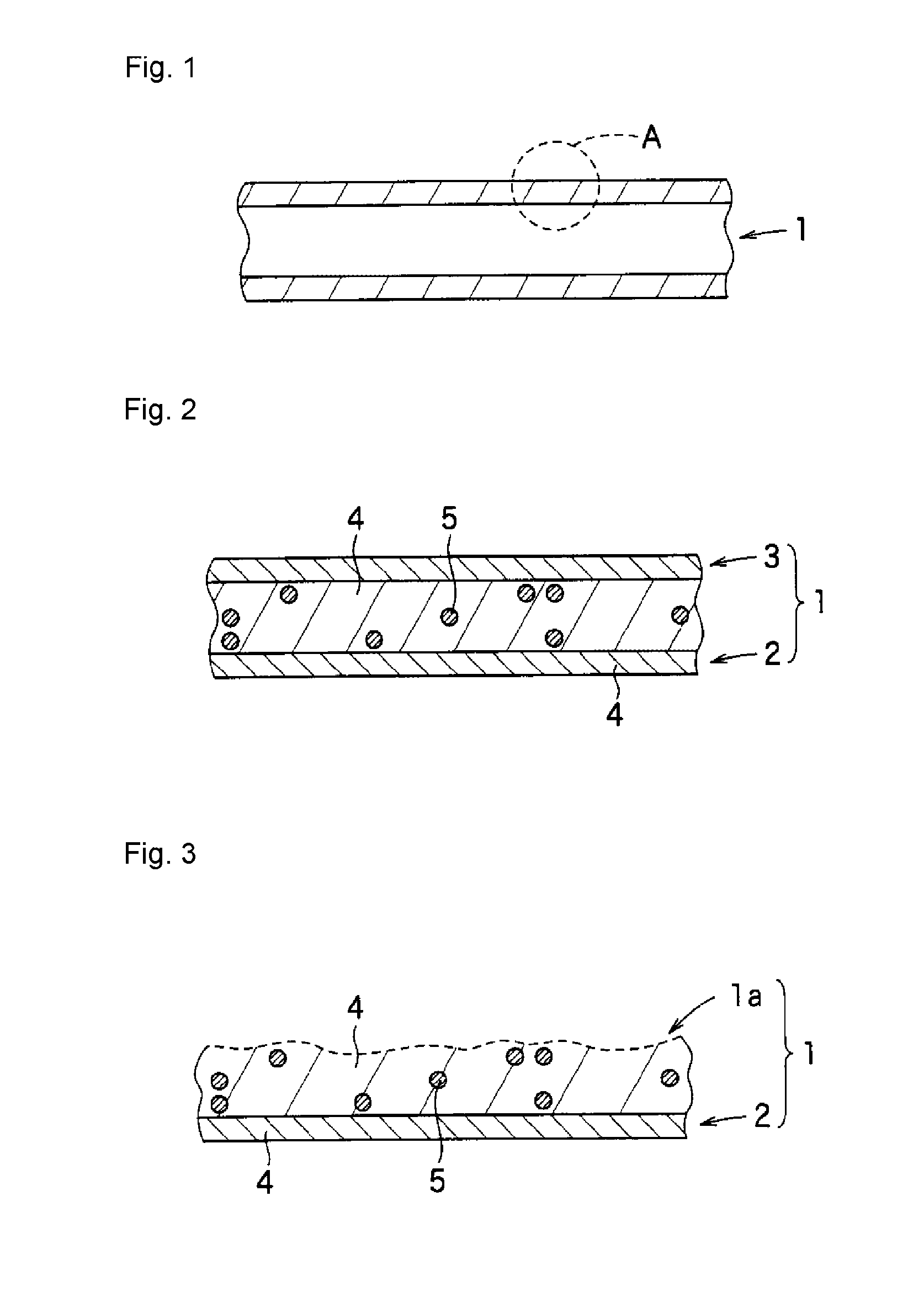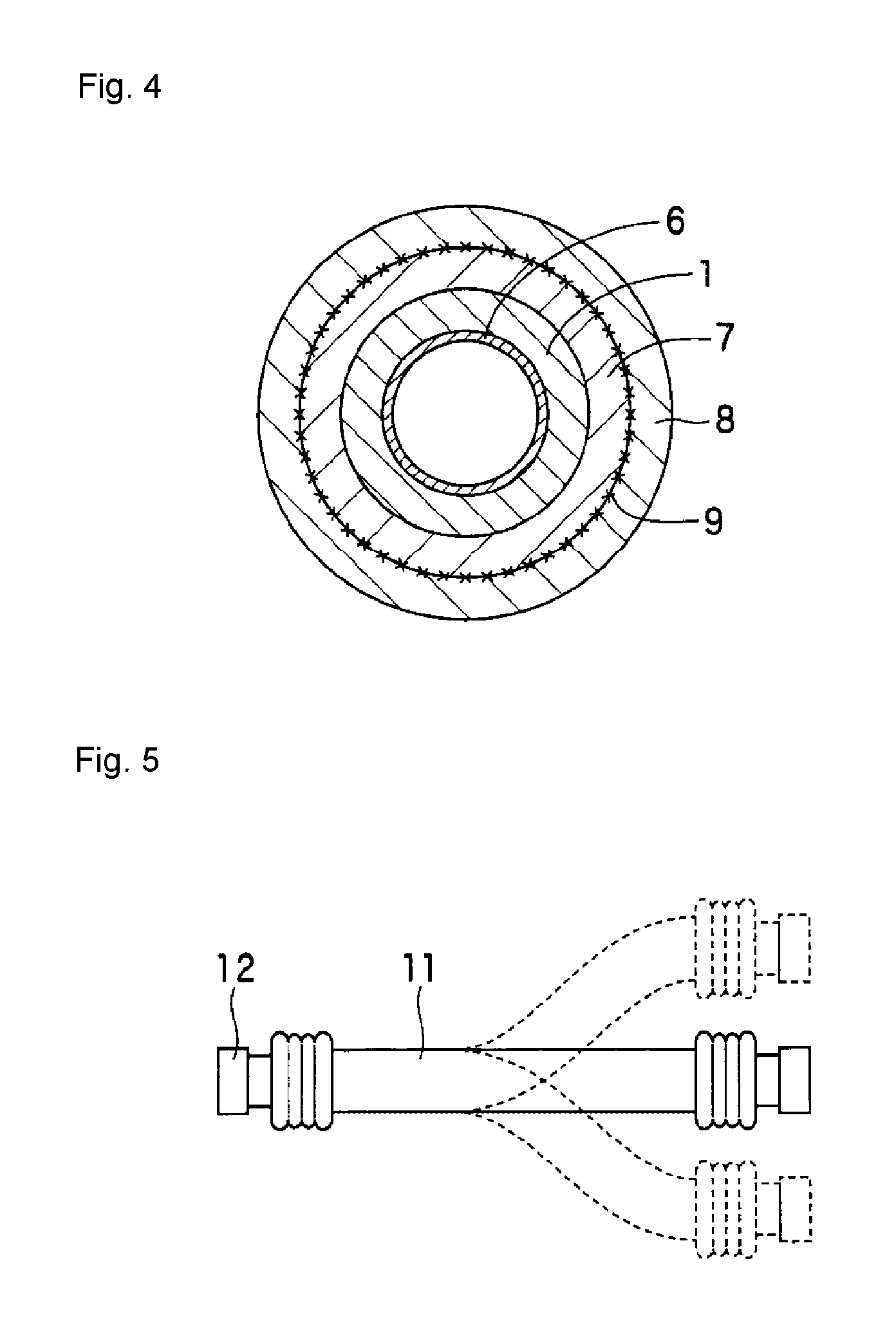Hose for transporting refrigerant and method of producing the same
a technology for refrigerant and hose, which is applied in the direction of mechanical equipment, other domestic objects, synthetic resin layered products, etc., can solve the problems that the hose cannot be fully avoided when it is bent (shaken), and achieves low melt viscosity, easy melt, and high crystallinity.
- Summary
- Abstract
- Description
- Claims
- Application Information
AI Technical Summary
Benefits of technology
Problems solved by technology
Method used
Image
Examples
example 1
[0081]By using a double-axis kneader (manufactured by JSW STEEL LTD.), polyamide 6 (PA6) (trade name: NYLON 6 1030B, manufactured by Ube Industries, Ltd.) as a polyamide resin and maleic anhydride modified EPDM (trade name: TAFMER MH7020, manufactured by Mitsui Chemicals, Inc.) as a modified polyolefin elastomer were mixed at the temperature the same or higher than the melting point of the polyamide resin (250° C.). The mixing ratio (weight ratio) between the polyamide resin (a) and the modified polyolefin elastomer (b) was (a) / (b)=70 / 30.
[0082]100 parts by weight of chlorinated butyl rubber (CI-IIR) (trade name: BUTYL HT1066, manufactured by JSR CORPORATION), 1 part by weight of stearic acid (trade name: LUNAC S30, manufactured by Kao Corporation), 20 parts by weight of FEF grade carbon black (trade name: SEAST SO, manufactured by TOKAI CARBON CO., LTD.), 100 parts by weight of talc (trade name: MICRO ACE K-1, manufactured by NIPPON TALC Co., Ltd.), 10 parts by weight of naphthene o...
example 2
[0085]By using a double-axis kneader (manufactured by JSW STEEL LTD.), polyamide 66 (PA66) (trade name: NYLON 66 2015B, manufactured by Ube Industries, Ltd.) as a polyamide resin and maleic anhydride modified EPDM (trade name: TAFMER MH7020, manufactured by Mitsui Chemicals, Inc.) as a modified polyolefin elastomer were mixed at the temperature the same or higher than the melting point of the polyamide resin (270° C.). The mixing ratio (weight ratio) between the polyamide resin (a) and the modified polyolefin elastomer (b) was (a) / (b)=70 / 30.
[0086]A hose was produced in the same manner as in Example 1 except using the resin layer material prepared above.
example 3
[0087]By using a double-axis kneader (manufactured by JSW STEEL LTD.), polyamide 6 (PA6) (trade name: NYLON 6 1030B, manufactured by Ube Industries, Ltd.) as a polyamide resin and a copolymer of glycidyl methacrylate and ethylene (trade name: BONDFAST 2C, manufactured Sumitomo Chemical Co., Ltd.) were mixed at the temperature the same or higher than the melting point of the polyamide resin (250° C.). The mixing ratio (weight ratio) between the polyamide resin (a) and the modified polyolefin elastomer (b) was (a) / (b)=80 / 20.
[0088]A hose was produced in the same manner as in Example 1 except using the resin layer material prepared above.
PUM
| Property | Measurement | Unit |
|---|---|---|
| Pressure | aaaaa | aaaaa |
| Pressure | aaaaa | aaaaa |
| Pressure | aaaaa | aaaaa |
Abstract
Description
Claims
Application Information
 Login to View More
Login to View More - R&D
- Intellectual Property
- Life Sciences
- Materials
- Tech Scout
- Unparalleled Data Quality
- Higher Quality Content
- 60% Fewer Hallucinations
Browse by: Latest US Patents, China's latest patents, Technical Efficacy Thesaurus, Application Domain, Technology Topic, Popular Technical Reports.
© 2025 PatSnap. All rights reserved.Legal|Privacy policy|Modern Slavery Act Transparency Statement|Sitemap|About US| Contact US: help@patsnap.com



